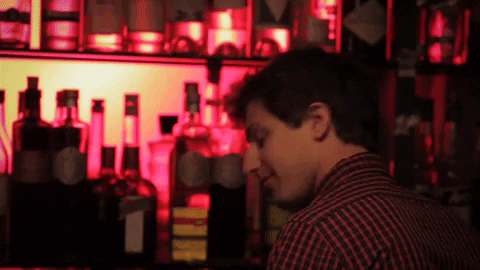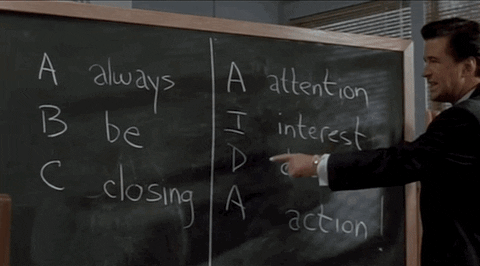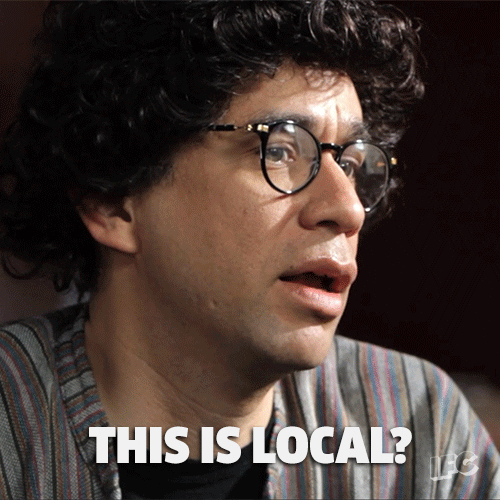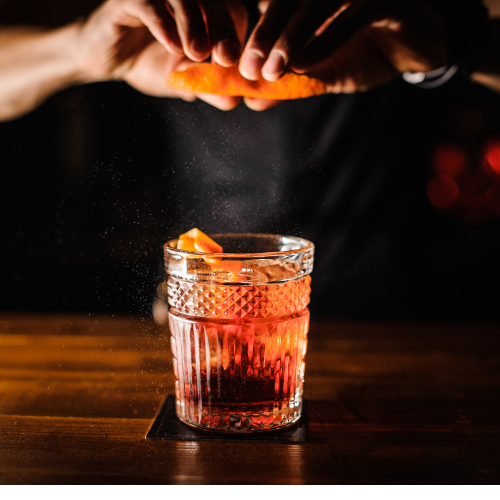When I graduated with my master’s degree in June 2009, during the previous Worst Recession Ever, I couldn’t find a job. My experience as an editor and researcher meant very little to companies that were laying off copyeditors left and right, and it really didn’t matter that I’d taught undergraduate news editing at one of the largest universities in the country: I was just another unconnected outsider with no parental or personal connections to the nepotism-heavy unpaid-internship-as-entry-level-job Twin Cities media industry.
After months of sending hundreds of resumes and cover letters to no avail, subsiding on the occasional less-than-minimum-wage freelance writing assignment, I found a gig at the first mixology bar in Minneapolis.
When I was hired, all I knew was that my cool friends with good taste liked the bar, and it had only been around for a few months. Its location — across from the best music and sports venues in Minneapolis — ensured that it would stay relatively busy. The hotel provided insurance coverage, a rarity in service jobs. I knew it would keep me afloat.
What I learned within the first week:
- The bar was the first-floor hotel bar and had in previous iterations been a club.
- There were no windows, so it was not a particularly popular all-seasons destination.
- The uniform was a heinous polyester brown-and-black suiting affair that would have immediately melted to my skin were there a fire… but least I wasn’t working at the Hooters upstairs. (Mad respect to all the Hooters servers; they have to put up with so much bullshit of a different stripe.)
- The concept was specifically a pre-Prohibition–era cocktail bar. Did I know what that buzzword meant when I started? Did our customers know when they first arrived? Nopers!
- The co-owners were restauranteurs from Chicago, via New York’s famously clubby Milk & Honey cocktail bar.
- The other co-owner was the son of the hotelier, so the cocktail bar was his pet project, and he thought hotel jazz was the best soundtrack for our bar across the street from the world-famous music venue.
- The bar did not serve “normal” or even “luxury” cocktails. You could not order a bleu cheese–stuffed olive martini or a cosmopolitan. Servers were expected to sell the new-to-our-audience cocktails on the menu.
- We didn’t serve meals, only tapas, and the chef was unfortunately second banana to the cocktails. Our co-owners made sure that there would be no food-and-cocktail pairings, even though pairings were a massive trend at the time. The owners’ theory was that cocktails and food were different experiences and should be treated as such.
- The menu only listed main cocktail ingredients. Servers and bartenders provided all the additional details, including flavor profile and history, depending on the type of customer we encountered.
- If a stubborn customer insisted on ordering a vodka tonic or even a beer, the bartenders would chastise the server: “Did you explain to them what kind of bar this is?”
- We only served one cocktail with vodka, and we were expected to persuade all customers to order it with gin, the way it was intended because “vodka is colorless and tasteless, and the point of our cocktails is to taste and celebrate the liquor.” Vodka drinkers love when their drink is called tasteless, let me tell you…
- Not only did we need to know the seasonally shifting menu forwards and backwards, but I was expected to learn the history of all the obscure liquors that made up the cocktails, as well as the theory of pre-Prohibition–era cocktailing itself.
- We were also expected to describe the “ice program,” aka those superdense ice spheres and ice cuboids that required special machinery to create.
- Most cocktails were $10-12, which was high for MPLS in 2011.
- The hotel expected a mixology bar to be a tough sell to the upper Midwest, so they printed hundreds and hundreds of no strings attached free cocktail coupons to lure people in, meaning that couples often came in, ordered one drink each and left without tipping.
- For some reason the hotel included the tip in every single check, so we had to explain to all non-coupon customers that they could not choose what to tip their servers. (Not a popular system for either servers or customers!)
- There was no bathroom on the same floor of the bar (city hotel = no first-floor restrooms). The only restroom was accessible five floors up, via elevator.
Essentially my job was telling people I could not serve them what they thought they wanted. Whether they wanted a coffee martini, a clever burger-and-cocktail pairing, or a quick pee, every answer I offered was not, shall we say, customer-obsessed.
My job was to convince them that even know they weren’t getting what they asked for, they were certainly getting what they paid for. I was to assure them that, despite all the quirks about our product, they were going to taste magic.

And they did! Those cocktails tasted absolutely delicious every time! The bartenders were beyond talented! The ice was really fun! And sometimes even lowly servers like me did magic tricks with fire at the table. For every drunken late-nighter wandering to the back room wondering where the DJ was and could they get a Bud Light, there were ten tables of cocktail enthusiasts who had arrived on our reputation and quality of product alone, spending $30-50 on drinks a piece, assured that the next day’s hangover would be worth it.
Working at a mixology bar in 2010 was not too far off from selling technology: we were introducing a new concept, based on familiar ideas (it’s a bar with old cocktail recipes), but marketed as new and trending. Every cocktail name became its own buzzword, backed by its own origin story and reputation, comprised of craft liquors, each with a history of its own.
At the cocktail bar, I saw first-hand at a startup how, while reputation and novelty brought people in the door, damn good content both converted them to believers. The drinks were the star of the show, yes, but content was the sales strategy, with every bartender and server fluent in the history and method of every drink we sold. Every season we made flash cards and memorized new recipes. We traded books on the history of rum and knew the differences between jenever and London gin. In our detailed descriptions and nuanced recommendations, we took pride in passing our cocktail acumen to our customers. The amount of cocktail knowledge we gave them would be considered radically transparent; each of them could have gone off to make their own version of their favorite cocktails at home. They’d tell their friends, encouraging them to come visit our bar.
Software websites should be more like mixology bars
When I work on web content strategies, I encourage clients to put as much detail as possible about their products on their websites, to assume the role that the servers played in helping our customers understand technology. It helps customers understand what the product is, and it helps search engines assign expertise. I’m an advocate toward transparency in process — more detailed content means more opportunities for connection, which ultimately means a bigger market.
Nearly every transparent marketing strategy runs into conflict when discussing with the sales team. “We need to give them a reason to contact us and speak with us,” salespeople will say. “We don’t want to put every detail on our website because then our competitors will copy. Let’s just put the bare minimum on our sites and then send people to us.”
This attitude — rooted in a 20th sales strategy reminiscent of Glengarry Glen Ross via Dale Carnegie — means that we end up with the same meaningless B2B SaaS website writ large, over and over again. The content of the website is essentially a brochure. No details, either because of a lack of confidence in the product or a deliberate withholding of “proprietary” information, or both.

I’m picking on B2B software here because I spend time on those websites and work with many of them as clients. These websites start with phrases like “Maximize outcomes! Leverage insights! All stages of the funnel! Real-time analytics!” To drive personal connection, users are encouraged to contact a sales rep — who more often than not knows even less than the vague website. The sales rep follows up with meaninglessly automated drip campaigns (you know you’ve received them), filled with buzzwords. No one knows what you’re selling, why you’re selling it, what specific problems it solves, who should use it, or how the product works.
The assumption that personal calls somehow make for a better customer experience, when more than 60% of B2B customers currently prefer self-serve vendor and service evaluation rather than talking with a sales rep (via McKinsey), drives many businesses away from using more detail and trust signals on their websites. Even good technology vendors—including many of the tools I review for this newsletter—provide scant detail on how their products work, instead preferring vague generalizations like “we work to meet our customers’ needs” over listing the core functions of their product. Sometimes you can find good details in notes for developers or help documentation, but they’re not clearly integrated into the main web content.
Software, like cocktails, is not a brand new concept. It’s built on other software, with known theories and methodologies that engineers intentionally choose. Like cocktailing, software has never been magic — it’s based in human structures and datasets, programming languages, other software, and heavily researched and discussed academic theories. Because technology is always selling what’s new, software brands feel they don’t have to disclose their history or theories, just describe the product as vaguely as possible, provide a bare-bones FAQ and developer documentation, and be done with it.
How to use trust signals in building your brand content
What made the cocktail bar’s success in its first two years had more to do with what we in the SEO world call trust signals. Trust signals indicate to both potential customers and search algorithms that they should put some faith in your source, over the many types of sources out there. Since trust in literally every previously authoritative source of information is at an all-time low (via Edelman), it behooves your business to invest some time in building trust signals with your content.
In the absence of a well-informed server to walk you through the menu, digital trust signals help customers understand that your business is intentional about its practice and stands behind its work. Especially if you’re running a startup, digital trust signals are crucial to establish connection with your customers, while you work on building a company. As B2B customers and consumers are increasingly more aware about how technology works and when it feels like a scam or a bad investment (Predictive text on iPhones! Programmatic advertising! Juicero!), trust signals establish your reputation and keep customers engaged.
Here are some good trust signals, via the mixology bar, confirmed by Google’s Search Quality Rater Guidelines.*
- List the ingredients. Define the foundations of your product or service. Is it a creative use of an existing technology or a uniquely new algorithm developed based on a new theory? How do mission, vision and values inform how the product is developed? What do you offer that your most recognizable competitors do not? Use terms an informed customer would understand: even if the supplementary ingredients are more nuanced, are we generally drinking whiskey, gin, rum or tequila?
- Support with knowledgable product details. Expert content, checked with factual details from historical or primary sources, signals to both your users and algorithms that you know what you’re talking about. At the mixology bar, if we didn’t know an answer to a customer’s question, we’d grab a coworker to help out, or we’d recommend the resources we liked so customers could do their own research. Don’t be afraid to link off to another source — if it confirms to your customers that you’re telling the truth, it’s worth the chance that a customer might leave your website… they’re leaving your website to become a customer.
- Develop both a brand story and product stories. The cocktail bar had a history of its founders on the menu’s back page, just as most websites have About pages. But that wasn’t the story of each cocktail. Each cocktail had its own unique history, and the ones with the flimsiest histories (“the bartender likes it” is not a good story) were the hardest to sell. Your product stories should tie into your brand… but they also should stand apart on their own. They’re different sets of details, and you want your customer to understand that you’ve considered both your products and your brand with care — the way they’re about to address your needs.
- Testimonials and referrals work. As the most common trust signals, testimonials and case studies with names and company logos prove that your business has, in fact, interacted with people and done a good job. Our mixology bar would have gone nowhere without positive reviews from local food critics (especially since the Yelpers at the time thought we were snobby. And we were! But the drinks were good and we made sure you had a good time with our snobbery.) Link to your press even if the profile isn’t entirely glowing. Show your potential customer that people care enough about you to merit a mention.
- Don’t be shy about awards. Both search engines and people like to see that you’ve won awards. Even folks like me, who think awards aren’t any indication of much besides extra time to write a good awards application, know that awards are at least a good indication of a somewhat successful business. The mixology bar won awards and accolades at local bartending competitions, and it was listed in Food & Wine as one of the best restaurants in America. When you have award-winning work, let others know.
- Explain why your technology is good. By 2021, buyers know that not all martech works as advertised, and what’s advertised is often a heap of buzzwords with little actionable meaning. Most of what’s labeled as “AI” is either semantic analysis of crawled content, datasets usually purchased from big tech players, or just plain human-designed automations. For any tech that promises “we’ll get your audience to the right stage at the right time,” businesses need to answer how because literally every martech business promises the same thing! Almost none of them describe their user testing processes, their confidence in their datasets, or their new way of thinking about their foundational technology, to their detriment. Most customers are happy to try something new — like an ice program, like an amaro — but they’ve had drinks before, so they want to know how and why your drinks are different. You don’t need to audit your algorithms in front of your customer! But a business needs something other than a vague case study to demonstrate that your tech is worth your customer’s time. Even Google search and the Facebook algorithm are betting on transparency their public explanations of their product, proving you can educate your audience without giving away the secret sauce.
- Say it with authority. My sales at the cocktail bar were not good for the first three months. I didn’t know much beyond my menu, and compared to the other servers I did not know my ins and outs. It wasn’t until I nailed my “Have you been here before?” speech and learned how to tell each cocktail’s story with authority that I saw what the bar could be for its customers: a gateway into another expertise. Your customers enjoy being amateur experts. If the story’s solid, if the details are in line with the theory, if you can tell it with variation and passion without being nervous or vague about what you’re sharing, then you can impart some of your authority — and maybe your customers will indulge in future rounds of cocktails.
- Don’t be afraid to say no. Your bathroom might be on the fifth floor. You might not have your customer’s favorite all-time appletini. But knowing who you are and being specific about what you do (and what you don’t) only makes your customers . There’s still a lingering perception among the unfamiliar that all digital marketing — from influencer partnerships to PPC to web design — is all the same. Twenty years into digital marketing, we need to stop insisting that our businesses help with every single digital problem. Good businesses solve extremely specific problems! Define what those are, and let your sales team know what they should say no to.
- Partner with likeminded businesses. Whether you’re joining professional associations or just sharing a link to another business with a similar (but not the same) expertise, partnerships and collaborative competitions. The cocktail bar’s popularity grew when more mixology bars opened up in our city, when more media started to understand how our scene worked. With each other, you develop referral networks that are trust signals in themselves.
- If there’s a full egg in a drink on a menu, then someone wants a full egg in their drink. Even if you don’t understand the need for a full egg in an alcoholic beverage (still not at all appetizing for me!), one of your customers is going to love it. You are not your audience. If your brand offers products for a variety of customers and a variety of needs, even if your marketing agency is so insistent on the data behind one detail that no one on your sales team is into, learn how to recognize and understand the customer who cares about that detail. On a website, it’s fairly easy to use content to let your full-egg customers self-select: write a page called “Drinking egg yolks for pros” and use it as a lead gen gateway.
- Let your people tell your story. Train them, test them if you need to, but let them tell it how they need to tell it. Their voices and authentic spin give your brand voice that goes beyond any investment in a branding campaign. If you can’t offer on-the-job training, like when my manager would shadow me and give me tips on the sales process cos I was clueless, good branding and style guide will help your sales reps rather than hinder them.
What’s not listed as a trust signal? Hotel jazz. Automated tipping that’s not included in the menu prices. But mostly: coupons. Discounts and coupons are the opposite of trust signals for new customers. The coupons brought in the worst customers, those who would never return or stick around for a second round, customers with no lifetime value.
*Google's Search Quality Evaluator Guidelines is a 175-page PDF that Google provides to contractors who evaluate search result quality. It's basically the standards that are used to create the docs that train the organic search algorithm and determine whether it's doing its job correctly. The rater guidelines are seen by SEO professionals as about where Google wants its search results to be and provide an immense amount of information for how the search engine recognizes and evaluates trust signals.
*Google's Search Quality Evaluator Guidelines is a 175-page PDF that Google provides to contractors who evaluate search result quality. It's basically the standards that are used to create the docs that train the organic search algorithm and determine whether it's doing its job correctly. The rater guidelines are seen by SEO professionals as about where Google wants its search results to be and provide an immense amount of information for how it evaluates trust signals.
Mixology ten years later
By the time I left the bar, a decade ago this week, mixology bars and cocktail programs were just getting started in Minneapolis. Though the restaurant itself is still running, it's a weird shadow of what it once was. My coworkers went on to run some of the most popular restaurants and bar programs in the Twin Cities, and I'm rooting for them to get through this abysmal time. The buzzword “mixology” has been watered down into hard seltzer, and tony cocktail bars with no windows are not exactly fit to survive the pandemic.
That gig gave me confidence and a sense of storytelling that I hadn't matured into before. I learned how to read people's tastes and understand what they were afraid to ask. I learned how to sell through connection and enthusiasm, through listening and expertise. It's also why, when I hire direct reports, I value service and retail industry experience more than internships and office gigs.
When we’re all vaccinated and out on the town again, I expect content-heavy food experiences and informed, yet personal service experiences to return (unless they’re based in family style dining, in which case: never again). I expect all of us who have spent way too much time alone in the past year to be genuinely curious about pretty much everything we consume — on a one-to-one level.

Because details and humanity, those are trust signals. To restore our trust in each other, our businesses and our institutions, we have to talk, to know histories, to explain our perspectives. Expecting the product to work magic on its own — as the cocktail industry once was and as the tech industry still somehow is — isn’t going to cut it anymore. Our clients and customers will want to know why any unique business cocktail is going to taste good — from conception to execution, and on every visit thereafter.
Postscript
That gig gave me confidence and a sense of storytelling that I hadn't matured into before. I also was able to make enough to live on my own and health insurance on 25 hours a week while balancing a side-hustle media company and an unhealthy social life (alcohol begets more alcohol begets too much, too often). It's also why, when I hire direct reports, I value service and retail industry experience more than internships and office gigs.
In case you’re wondering: Yes, I remember many of the theories and recipes. I have all the recipes in my file cabinet, tucked away for the rare occasions when I have all the ingredients. Yes, I’m a lot of fun at a party with a full bar. I can stir a drink without moving my wrist.
And if you squeeze an orange peel in front of a lighter over jack rose cocktail, it makes a flame and also flavors your cocktail, but you’ll probably burn yourself the first 20 times you try it. It's only cool once you have the expertise.
Hand-picked related content
- Types of website nav menus: Farm-to-table web design
- Best practices for business websites in the 2020s
- Planning to build trust through content in 2021 (paid members only)



